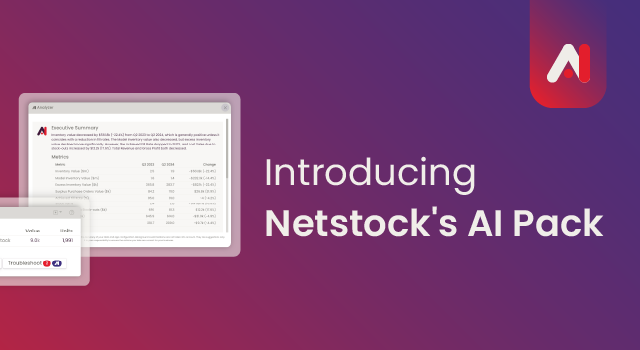What’s in this blog?
Tighter budgets are reshaping how businesses manage their finances, pushing them to innovate and rethink their operational strategies. This presents a unique challenge: how can you reduce costs while still maintaining – or even enhancing – operational efficiency? Choosing the right inventory management strategy can help you cut costs while allowing your business to remain agile. Could Just-In-Time (JIT) inventory management be the solution you’re looking for?
Let’s take a closer look at how JIT could help your business minimize waste, reduce overheads, and enhance your operational efficiency, to keep your finances firmly in the green.
What is Just-In-Time (JIT) inventory management?
Let’s imagine an apparel company has to produce 20,000 skirts. Keeping fabric, elastic and zips on hand would cost thousands of dollars to not only purchase but store the raw materials too. Let’s picture a more streamlined scenario where the fabric and trims are shipped directly to the factory on the day the order is scheduled for production. This makes much more sense, right? That is how Just-In-Time (JIT) inventory management works in a nutshell. It’s a smart way to closely align your production schedule with your raw materials, reducing waste, lowering your inventory costs, and improving your overall efficiency. The JIT approach originated in Japan and has been popularized by large corporates like Toyota who have adopted the strategy as part of their lean manufacturing system.
JIT aims to lower inventory levels by only ordering materials to produce goods when there is:
- a purchase order from the customer and
- the order is within an optimal time frame that leaves enough time for production and delivery on time.
This requires businesses to practice accurate inventory forecasting and closely coordinate with suppliers to ensure that components arrive at the right time. JIT can be adapted across almost any industry which is one of the many reasons why it’s a smart strategy.
The advantages of JIT inventory management
Reduction in inventory costs
Let’s face it: holding inventory costs money. And who wants to eat into already-lean profit margins if it’s not necessary? There are a lot of costs associated with holding stock which includes:
- Storage costs for warehouse space like rent, utilities and maintenance.
- Insurance is necessary to cover accidental damage, loss, or theft.
- Taxes are charged on inventory in certain areas (i.e., import taxes).
- The money tied up in inventory could be invested elsewhere or to take advantage of opportunities.
- Inventory can get damaged or become obsolete, especially if the items are perishable or have a short life cycle.
- You will need to pay employees to manage, handle and secure inventory.
If your business switches gears to only receiving goods as they are needed, you can slash your overhead expenses and improve your profit margins.
Increased efficiency and productivity
Time is money when it comes to manufacturing goods, so ultimately, you want to avoid idle time. JIT can help you streamline your production process and enhance productivity by reducing lulls. You can also remain more agile to customer demands while still protecting your finances. For example, imagine you’ve ordered thousands of components for an order months in advance only for your customer to reduce their units closer to production time. You’re going to either end up sitting with excess inventory or sour the relationship with the customer. However, if the components only arrive as they’re needed, you can quickly adapt your production schedule to accommodate your customers.
Enhanced quality and customer satisfaction
There is a heavy focus on quality control when following the JIT model. This close attention to detail can lead to improvements in your product quality and fewer defects. This not only enhances customer satisfaction but helps you dodge returns that leave you sitting with worthless reject stock.
Flexibility and responsiveness to market changes
Markets change and so do customer demands in response. A JIT approach can give you more flexibility in responding to these changes, especially in industries where trends are rapidly changing.
The disadvantages of JIT inventory management
Vulnerability to supply chain disruptions: If you fail to closely manage your supply and demand planning, your business becomes vulnerable to supply chain disruptions. Delays in getting your materials delivered can halt production and even lead to late delivery penalties or outright cancellations.
High dependency on suppliers: JIT’s effectiveness relies on your suppliers delivering components on time. Any delays, whether due to logistical issues or supplier reliability problems, can disrupt the entire production schedule. If you’re struggling with shaky supplier relationships, you may want to rethink this strategy.
Initial implementation challenges: Change is never easy, and as such, many businesses find it challenging to transition to a JIT system. It requires a fundamental change in thinking and how things are run. Ample preparation and training are essential for a smooth transition.
Limited suitability for certain industries: Industries that experience high variability in demand or those with complex supply chain structures may find JIT difficult to implement. This includes:
- Healthcare and pharmaceuticals
- Agricultural products
- Seasonal products
- Construction
How do you know if JIT is right for your business?
Deciding on whether to implement a JIT system is not linear – you’ll need to assess a number of factors to figure out if it’s right for your business. This includes:
- Your business model
- Industry standards and best practices
- Your supplier relationships and reliability
- Cash flow
No matter how well you manage your forecasts, things can still crop up to derail your plans. That’s why any business adopting a JIT model should have a contingency plan to quickly address potential disruptions.
Alternative approaches to JIT
JIT may offer many benefits, but it’s not always the best fit for every business. Other inventory management strategies include:
- Push inventory management system: Your business will produce goods based on forecasted demand and then push them to the consumer. This is suitable for products with predictable consumption patterns.
- Safety stock inventory management: In this scenario, you keep extra inventory (referred to as safety stock) to prevent stock-outs. This is best for businesses where delivery delays can cause serious issues.
- Demand forecasting and advanced planning systems: You will use historical data and predictive analytics to adjust inventory levels and optimize stock as demand fluctuates.
- Hybrid models: This approach combines elements of different inventory strategies to tailor inventory management to specific business needs.
- Continuous Replenishment Programs (CRP): Stock is automatically replenished based on real-time data to ensure consistent product availability and lowering inventory levels.
Final thoughts
As with anything in business, weighing the pros and cons of any system is necessary before implementing something new. Whether you find JIT to be the lifeline your business needs or completely unsuitable, inventory management software can make all the difference to your business. Explore our Inventory Management Solutions at Netstock to see how they can enhance your inventory demand and supply processes.




